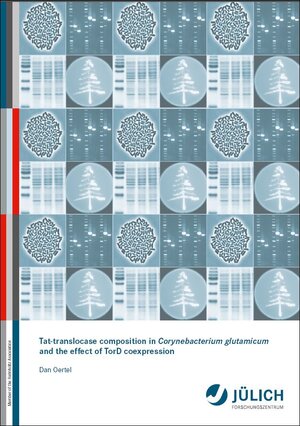
×
![Buchcover ISBN 9783893369966]()
Tat-translocase composition in Corynebacterium glutamicum and the effect of TorD coexpression
von Dan OertelWhite biotechnology employs microorganisms or microbial-derived enzymes for the production of
valuable chemicals. The significance of bio-based industrial processes has been steadily increasing
during the last decades; especially in facing the risks and challenges of a growing world population
and being able to satisfy the growing demand for fine chemicals, food additives for humans and livestock
and pharmaceutical products.
Modern biotechnology tries to address these needs by presenting bio-based production solutions
which are independent of fossil-fuel carbon-sources and thus not only more sustainable but also less
hazardous in their waste production. In the course of this development, the biotechnological production
of proteins and peptides has rapidly grown in importance. While the market for industrial enzymes
was around US$ 3.3 billion in 2010 it is estimated to reach a value of US$ 4.4 billion by 2015
(Adrio and Demain, 2014). Today, technical enzymes are being employed in a multitude of ways, e. g.
amylases, xylanases and lipases for the baking industry, pectinases and cellulases for vegetable, fruit
and wine processing and amylases and cellulases in the textile industry, many of which are produced
in Bacillus spec. and fungi such as Aspergillus spec. or Trichoderma spec. (Sarrouh et al., 2012). Also
products of pharmaceutical relevance such as recombinant human insulin produced in Escherichia
coli (Schmidt, 2004) or human Interferon (IFN)-? in B. subtilis (Rojas Contreras et al., 2010) have a
large demand.
Advantageous for downstream processing is the direct secretion of the desired polypeptide product
into the culture supernatant which can be accomplished with G ram-positive secretion hosts such as
Bacillus ssp. or Corynebacterium glutamicum.
valuable chemicals. The significance of bio-based industrial processes has been steadily increasing
during the last decades; especially in facing the risks and challenges of a growing world population
and being able to satisfy the growing demand for fine chemicals, food additives for humans and livestock
and pharmaceutical products.
Modern biotechnology tries to address these needs by presenting bio-based production solutions
which are independent of fossil-fuel carbon-sources and thus not only more sustainable but also less
hazardous in their waste production. In the course of this development, the biotechnological production
of proteins and peptides has rapidly grown in importance. While the market for industrial enzymes
was around US$ 3.3 billion in 2010 it is estimated to reach a value of US$ 4.4 billion by 2015
(Adrio and Demain, 2014). Today, technical enzymes are being employed in a multitude of ways, e. g.
amylases, xylanases and lipases for the baking industry, pectinases and cellulases for vegetable, fruit
and wine processing and amylases and cellulases in the textile industry, many of which are produced
in Bacillus spec. and fungi such as Aspergillus spec. or Trichoderma spec. (Sarrouh et al., 2012). Also
products of pharmaceutical relevance such as recombinant human insulin produced in Escherichia
coli (Schmidt, 2004) or human Interferon (IFN)-? in B. subtilis (Rojas Contreras et al., 2010) have a
large demand.
Advantageous for downstream processing is the direct secretion of the desired polypeptide product
into the culture supernatant which can be accomplished with G ram-positive secretion hosts such as
Bacillus ssp. or Corynebacterium glutamicum.


